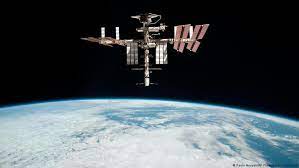
WASHINGTON, July 15, 2022 (BSS/AFP) - The United States and Russia said
Friday they would renew flights together to the International Space Station,
preserving one of the last areas of cooperation amid Western attempts to
isolate Moscow over the invasion of Ukraine.
"To ensure continued safe operations of the International Space Station,
protect the lives of astronauts and ensure continuous US presence in space,
NASA will resume integrated crews on US crew spacecraft and the Russian Soyuz,"
the US space agency said in a statement.
NASA said that astronaut Frank Rubio would fly with two Russian cosmonauts
on a Soyuz rocket scheduled to launch on September 21 from Kazakhstan, with
another astronaut, Loral O'Hara, taking another mission in early 2023.
In a first, Russian cosmonauts will join NASA astronauts on SpaceX's new
Crew-5 which will launch in September from Florida with a Japanese astronaut
also on the mission.
Another joint mission on the SpaceX Crew-6 will fly out in early 2023, NASA
said.
The move comes despite the European Space Agency earlier this week
terminating its relationship with Russia on a mission to put a rover on Mars,
infuriating Russian space chief Dmitry Rogozin who banned cosmonauts on the ISS
from using a European-made robotic arm.
But hours before NASA's announcement, President Vladimir Putin dismissed
Rogozin, a firebrand nationalist and ardent backer of the Ukraine invasion who
once quipped that US astronauts should get to the space station on trampolines
rather than Russian rockets.
Roscosmos, the Russian space agency, said the agreement with NASA was in
the interests of both countries and "will promote cooperation" on space.
"The agreement seeks to guarantee that in the event of an emergency caused
by the cancellation or major delay in a Russian or American space launch, at
least one Roscomos cosmonaut and one NASA astronaut will be present to service
the Russian and American sections respectively," it said.
NASA said that the ISS was set up for joint participation by the United
States and Russia along with Europe, Japan and Canada.
"The station was designed to be interdependent and relies on contributions
from each space agency to function. No one agency has the capability to
function independent of the others," NASA said.
- 'Dear friends' in space -
Soyuz rockets were the only way to reach the space station until SpaceX,
run by the billionaire Elon Musk, debuted a capsule in 2020.
The last NASA astronaut to take a Soyuz to the station was NASA astronaut
Mark Vande Hei in 2021.
He returned to Earth in March this year alongside Russian cosmonauts, also
on a Soyuz.
Speaking to reporters afterward, Vande Hei said that the cosmonauts
remained his "very dear friends" despite their nations' tense relationship.
"We supported each other throughout everything," he said. "And I never had
any concerns about my ability to continue working with them."
The United States has imposed sweeping sanctions on Russia after Putin on
February 24 invaded Ukraine, defying Western warnings.
The sanctions, which include tough restrictions on financial interactions,
have led to an exodus of leading US brands from Russia including Starbucks and
McDonald's.
But the International Space Station is unique. It was launched in 1998 at a
time of hope for US-Russia cooperation following their Space Race competition
during the Cold War.
The ISS is expected to wind down in the next decade.
Rogozin had warned that Western sanctions could affect cooperation.
"If you block cooperation with us, who will save the ISS from uncontrolled
deorbiting and falling on US or European territory?" Rogozin wrote in a tweet
earlier this year.
Kremlin spokesman Dmitry Peskov did not indicate that his removal meant
Putin was unhappy with Rogozin.
One independent media outlet said he would be promoted and could be put in
charge of occupied territories in Ukraine.